Make Your Own Terrarium Guide - for children
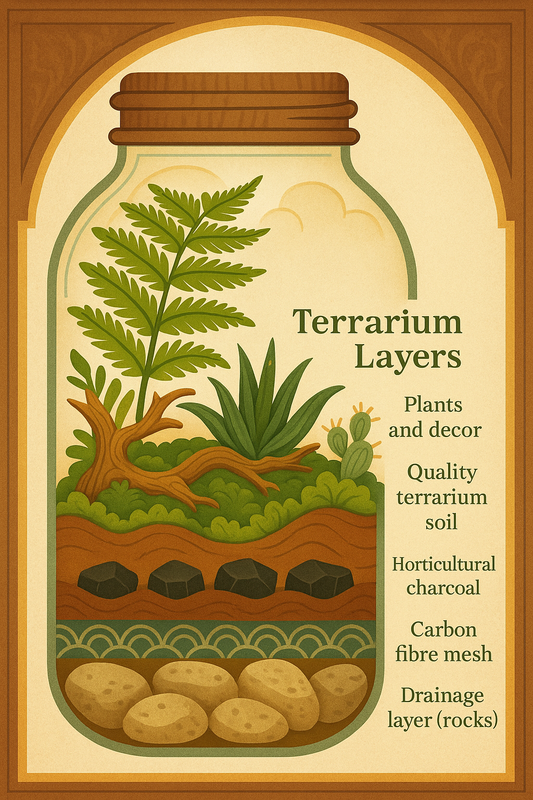
Guide to using our DIY Children’s Closed Terrarium Kit
Creating a closed terrarium is a fantastic family activity, blending creativity, nature, and a little bit of science. Not only is it fun to build, but it also introduces children to basic plant care, ecosystems, and responsibility. The best part? You can use foraged plants from your garden! Here’s a step-by-step guide to help you and your child create a beautiful indoor garden.
🧒 Before You Start
-
Suggested for ages 3+ (younger children may need more help)
-
Read through the guide in full before starting
-
Set up a mess-friendly workspace. I use a large plastic tray in the green house, but a cut-open bin bag on a table will work. Anywhere with enough flat space that you don't mind getting a bit messy!
📦 What’s in the Kit?
This list contains the base components of our kits, but you may have chosen extras in your kit.
-
Small stones (for drainage)
-
Mesh barrier (prevents soil from falling into stones)
-
Activated charcoal (keeps the terrarium fresh)
-
Potting soil (for your plants)
-
Spray bottle (to water the terrarium)
-
Colouring sheet (for fun instructions)
🧰 Unless Purchased, You Will Need:
-
Glass or plastic container with a lid
-
Plants (foraged or bought) - check out our foraging guide (link)
-
Decorative items (figurines, shells, pebbles, etc.)
-
Spoon or small shovel
Optional:
-
Gardening gloves
-
Trowel
-
Wellies (for muddy adventures!)
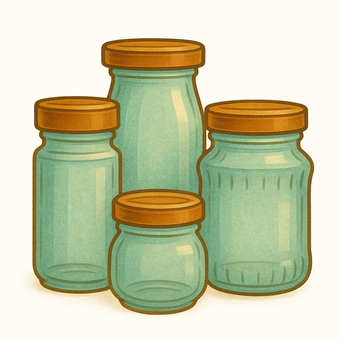
FIRST THINGS FIRST — Choosing a Container
Disregard this section if you have purchased a container with us!
- Most clear food jars work great (jam, hot dog, Nutella jars). Choose wide-rimmed jars for easier planting, but containers with smaller rims can make a challenge!
- Glass is best, but plastic can be used for younger children to prevent breakages.
- Don't have a lid? Try cling film or a vintage tea saucer from a charity shop.
Step-by-Step Instructions
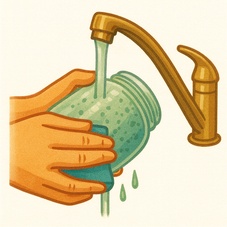
1️⃣ Select and Clean Your Container
-
Remove any labels and thoroughly wash your container with soap and water
-
Let your child pick their own jar
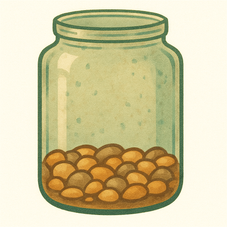
2️⃣ Add a Drainage Layer
-
Add approximately 1 inch of stones
-
WHY? The stones create a 'false bottom' where excess water can collect, and helps to prevent waterlogging and root rot
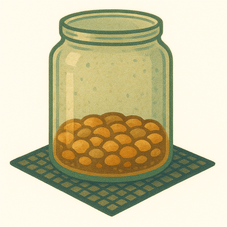
3️⃣ Add a Barrier Layer
-
Place glass container on top of mesh and carefully cut around it, so the mesh will fit carefully inside the container without overlapping.
-
WHY? Helps to stop soil from mixing with the drainage layer by creating a physical barrier
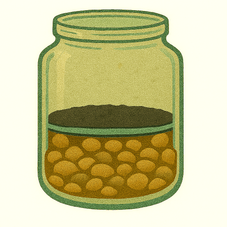
4️⃣ Add Activated Charcoal
-
Sprinkle a thin and even layer of activated charcoal on top of the mesh
-
WHY? Helps to filter water and prevent smells because the activated charcoal absorbs the toxins
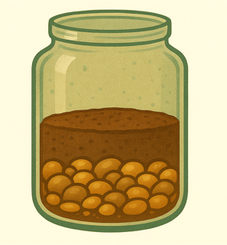
5️⃣ Add Soil
-
Add 2 inches of soil on top of the activated charcoal. Smooth the top using a spoon or fingers
-
WHY? The soil allows the plants to grow by providing nutrients and anchoring the plants in place
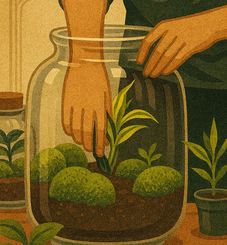
6️⃣ Planting Time!
-
Dig small holes with fingers or a spoon
-
Let your child plant and gently press soil around roots
-
Vary the sizes and types of plants for a more natural, layered look.
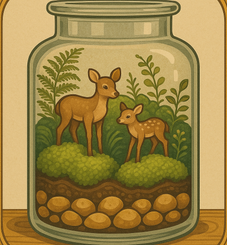
7️⃣ Add Fun Decorations (Optional)
-
Dinosaurs
-
Fairies
-
Shells or pebbles
-
Let their imagination flourish!
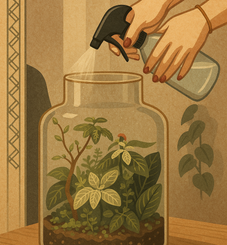
8️⃣ Watering
-
Use spray bottle to lightly mist
-
Avoid soaking – just damp soil
-
Closed: mist monthly / Open: every 1–2 weeks
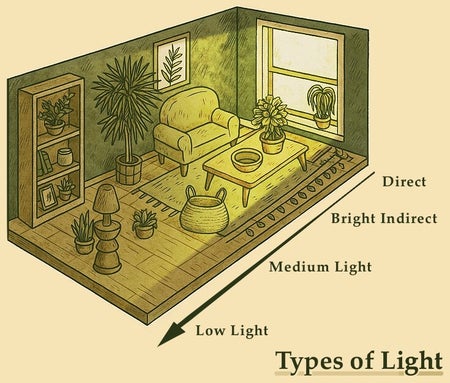
9️⃣ Choose a Home for the Terrarium
-
Your terrarium will prefer indirect sunlight (not too hot or dark, heat and light are amplified inside the glass)
-
Windowsill or shelf is perfect, but you can use artificial light if this is not available.
Caring for Your Terrarium
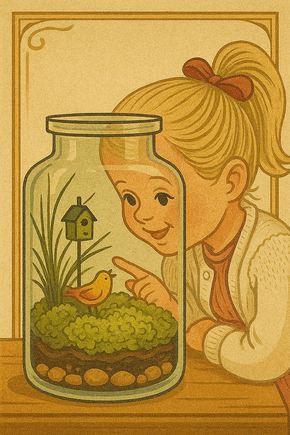
Weekly Check-ins:
✅ Check moisture – Mist with water if soil looks dry
✅ Trim dead leaves – Keeps the terrarium healthy because the dead leaves don’t fall and rot
✅ Watch for mould – Opening for one hour every week can improve airflow and reduce chances of mould
Read our aftercare guide for more information
🧠 Fun Learning Opportunities
🧪 Ecosystem in a Jar:
-
Explain how water cycles and plants clean air
📏 Plant Growth Tracking:
-
Use a ruler to measure changes weekly
📖 Storytelling:
-
Encourage stories about the tiny world:
“Who lives in your indoor garden?”
🌟 Final Thoughts
Creating a terrarium together is a magical, screen-free activity full of learning, laughter, and creativity. Your child will gain a sense of pride and responsibility while enjoying a miniature piece of nature - from your home.
For more information on how to look after your terrarium, check out our aftercare guide.
Promotional offer
Don't miss out on the chance to save while enjoying the quality and service you love. Keep an eye on this space for the latest updates and grab these amazing deals while they last!